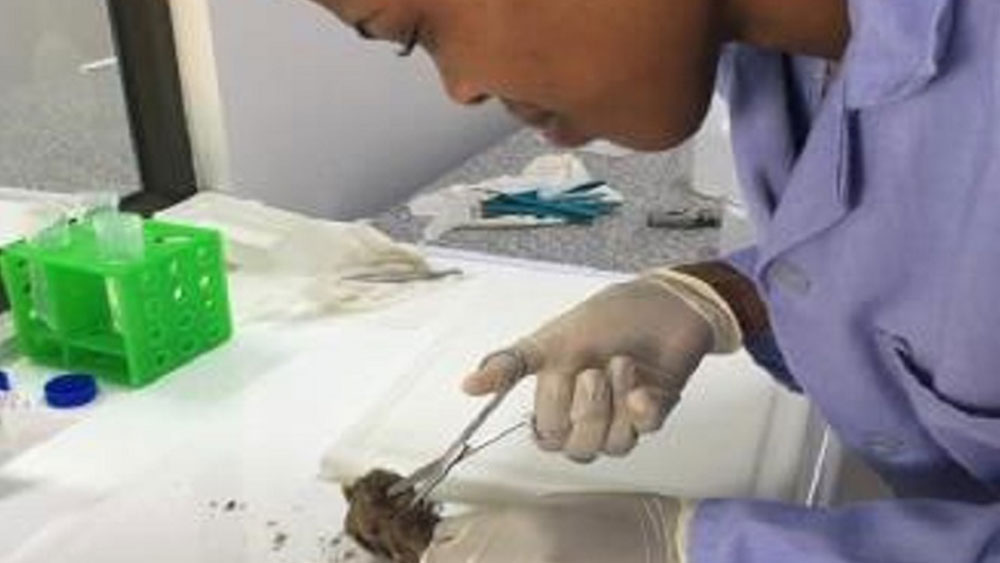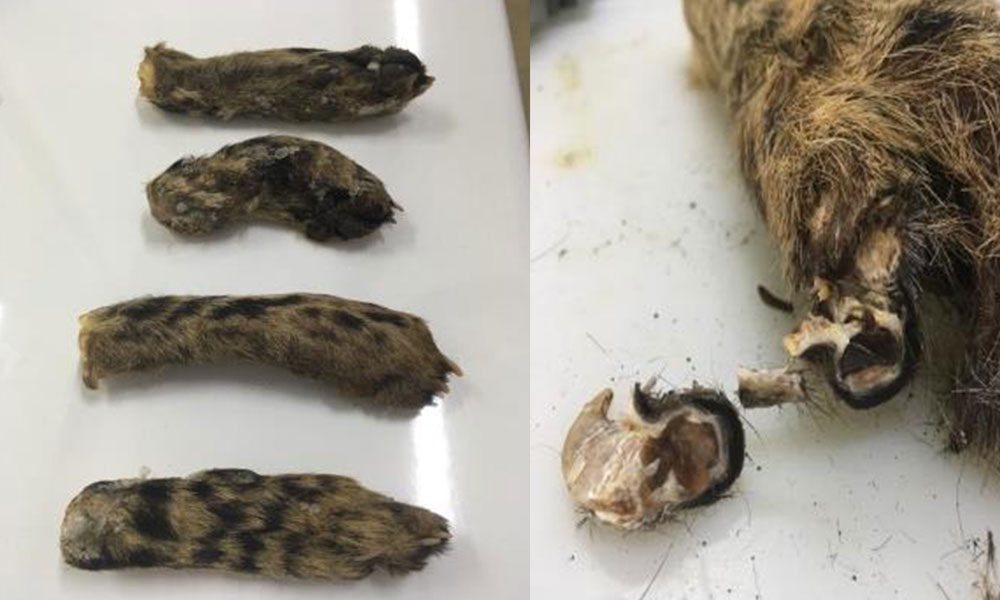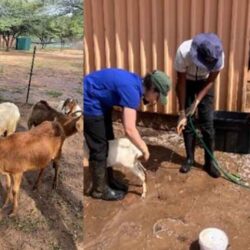Intern Story – Mystery Paws
-

- by Monika Ndafuda December 27, 2018

My name is Monika Ndafuda and I’m a young female scientist at CCF. I had the opportunity to undertake my undergraduate studies in India, at the Hindustan College of Arts and Science where I obtained my Bachelor’s degree in Biotechnology. As I am interested in forensics I am planning to focus my Master’s thesis research on wildlife forensics. The project will enable me to identify individuals of a species that predate on livestock. Loss of livestock through predation is an escalating problem for commercial as well as communal farmers in Namibia. I intend to use salivary DNA extracted from swabs of carcasses and hair shaved around the bite marks to identify the predator species using DNA sequencing.
This year I got to play detective and solved a wildlife crime using forensics. Back in 2014, four cut off cheetah paws were discovered at a nursery dumpsite in Windhoek. These paws where brought to CCF and attempts to extract DNA for analysis were conducted but no decisive results were obtained due to poor DNA quality extracted from the partially decayed tissue. Then I was assigned to the task…
Together with our lab manager and senior technician I attempted to solve the mystery about the origin of these paws. We wanted to know if these paws belonged to one individual cheetah or perhaps it were paws of four different cheetahs.
We started with a physical examination of the paws and made the following observations: The paws were slightly different in size. The two slightly smaller paws had dew claws which indicated that they were front paws. The other two paws looked slightly bigger and did not have dew claws and hence had to be hind paws.
The next step was to obtain clean samples for the DNA extraction. We reached consensus that extracting the nerve that runs into the nail should be used. So I researched on how to declaw big cats and we succeeded extracting the tissue.

I performed the DNA extraction using our Qiagen blood and tissue DNA extraction kit. I conducted a gel electrophoresis test to ensure that my extraction worked. Considering the paws had partially decayed I expected some difficulties and my worries were confirmed by the results. Instead of getting clear bands I got smears of DNA which indicated that the DNA was degraded. I however still went ahead to analyse the DNA using microsatellite markers.
In order for us to know if this was one cheetah or not we had to do a microsatellite test. Microsatellites also referred to as short tandem repeats (STRs are a tract of repetitive DNA in which certain DNA motifs; 2-6 or more base pairs are repeated. These have a higher mutation rate than other areas of DNA leading to high genetic diversity, thus they can be used to differentiate between individuals despite the overall low genetic diversity in cheetahs.
Using two different primer combinations namely mPlex1 and mPlex3, we ran PCRs (polymerase chain reaction) a technique widely used in molecular biology to make multiple copies of a specific DNA segment.
Both primer combinations showed identical results at all tested loci indicating that the 4 paws originated from one cheetah as they all showed the same genotype. With this result and a new DNA extraction method I was able to solve my first forensic case and I am looking forward to others.
Related Reading
-
September 30, 2025
Brendy’s Story: Honoring My Dad with the Cheetah Conservation Fund -
December 3, 2023
Paws, Prints and DNA: Chronicles of a Genetics Intern




